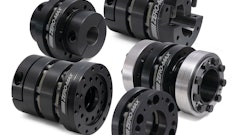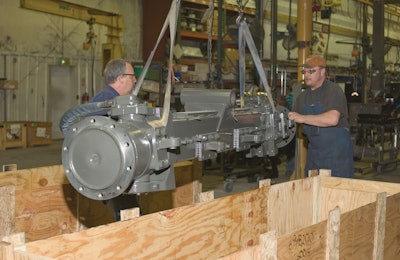
Hydraulic drive systems make some of the off-highway equipment industry's most unique vehicles possible. Unencumbered by driveshafts and chains, hydraulic drives give engineers the ability to design a specialized machine around the job it is supposed to perform — whether that's loading luggage into the new Aerobus A380 in Frankfort or harvesting raisins in California's San Joaquin Valley. Engines can be placed where it is convenient and hydraulic hoses can be routed down to motors that propel the wheels.
For many of the firms that supply the hydraulic drive systems and their components, it's in the new and unusual applications that the fun resides.
In 1976, some farmers discovered bolting a new steerable hydraulic drive axle onto the rear of their International Harvester combines made the difference between harvesting their crops at the right time or playing cards in the machine shed until the sun dried the muddy fields.
Today, Mud Hog brand axles are still available as aftermarket equipment to help give harvesters or sprayers extra mobility, but you'll also find three decades worth of experience installed as original equipment — as supplementary drive axles, primary drives, or a complete axle package, including non-powered units.
"Farmers know Mud Hog and what it can do for them," says Randy Minier, president, Tuthill Drive Systems (TDS), Brookston, IN. "They've put their Mud Hog axles through the most challenging testing ground there is, muddy crop land, over the past 30 years."
In harvesting, Mud Hog axles have also proven their worth in one of the most demanding and time-sensitive roles on the farm: There's never a good time for the combine to go off-line during harvest season.
John Deere, CNH, AGCO and Oxbo Int'l. have been customers for years, and you'll find the axles on combines made in Europe by Claas and Laverda.
Minier believes this proving ground translates well to the pressures of mining, airport ground support equipment, and more. The distinctive Mud Hog logo — a wild boar outfitted with a pair of ag tires — is finding a home on off-highway equipment that will never see a muddy soybean field.
The TDS team has identified a number of industries that would benefit from equipment propelled or assisted by hydraulic drive axles which are available in an array of configurations. You'll already find the company's work in roadbuilding and turf care equipment.
Tuthill Corp. acquired the Mud Hog line in 1999, when it purchased Fluidrive Inc. Last fall the product line became Tuthill Drive Systems, one of nine divisions within Tuthill Corp., and Minier was promoted to president. The move will allow Minier's group to focus on engineering, selling and supporting Mud Hog brand products while working to develop new opportunities.
Aftermarket to original equipment
A sizeable number of Mud Hog axles go directly to the OEM, and the trend is for business to keep going in that direction.
"We certainly have no problems going to an aftermarket application, and it is a great way to qualify products," says Minier, a 27-year veteran with the axle manufacturer. "But I believe we have the right track record with proven components to qualify as a supplier to any OEM.
"There is a lot of opportunity for the hydraulic axle business to grow. With the Mud Hog line as a separate division I will be able to focus on that at a higher level."
Minier says he loves working in the research and development area, but also recognizes the risks involved. "We won't lose focus on what we have, as there will be continuous improvement with our current customers, but we'll play in the R&D area.
There are a lot of people out there with a lot of great ideas. We are going to do what we can do to get those ideas into production."
With locations around the world, TDS has placed a lot of emphasis in listening to the "voice of the customer" (VOC). "With VOC we know we are integrated in a partnership with the OEM," says Minier.
Name your style
The Mud Hog line includes more than 100 different models, and one major agricultural OEM gets 44 of those. The broadening range of axle types follows the agricultural industry itself, and the fact that Mud Hog has become original equipment in many different applications. As the OEM's customer has become less impressed with off-the-shelf solutions, so too has the OEM in regards to the components it buys. Parts must be customized to meet unique applications.
"OEMs are looking to buy a higher bill of machinery, and want their suppliers to be system integrators," says Minier. To someone who has just walked in off the street, a complete Mud Hog unit might look like a simple axle, but that's far from the case.
TDS's staff of 14 engineers work closely within an OEM's requirements to create an axle to fit the machine, rather than waiting for the OEM to redesign the machine to fit an axle. TDS can handle everything from design to manufacturing and shipping.
"By supplying unique drive axle solutions, Mud Hog allows OEMs to design machines so the drivetrain does not impede on prime real estate, such as within the threshing components of a combine," says Minier.
Outsourcing the axles allows the OEM to focus on the aspect of the machine that put them in business in the first place. "Instead of an OEM diverting their own resources to axle engineering and manufacturing, Tuthill has become an outsource partner."
An OEM partner
Bomag uses Mud Hog axles on its MPH 362 and 364 asphalt recyclers. The two-wheel-drive 362 gets a non-driven front axle, while the four-wheel-drive 364 gets a hydraulically driven front axle. The initial engineering and manufacturing required for Bomag to get more traction from its two pavement recyclers was found to be cost prohibitive, so it approached TDS. The result was a drive system that mounted the same way as previous axles, and saved more time and money.
"For Bomag, the biggest advantage in going with a Mud Hog axle is it comes as a one-piece, ready-to-install system," says Bill Stalzer, engineering manager, Bomag Americas, Kewanee, IL. "We use a steerable pivoted axle and with the same pin mounting we can remove and replace a non-driven unit with a driven axle, hook up the hoses, and it's ready to go."
Each axle is a complex system, from the placement of the hydraulic components to the geometry of the steel itself. "There are quite a few things going on in both of those axles that didn't require my team to analyze, design and test. Our purchasing department did not have to procure dozens of part numbers," says Stalzer. "For Bomag, acquiring the axle means one part number."
The complete axle is shipped from TDS's northwest Indiana factory to Kewanee, where it goes straight to the assembly line.
Bomag uses Poclain high-torque, low speed motors on its Mud Hog axles, and it uses the same brand throughout its compaction product line. Parts commonality has its advantages for the dealers, as well as Bomag's engineers.
Back in Brookston
TDS uses a variety of motors on its hydraulic drive axles, but it works most closely with Poclain, which has been a partner for a number of years. Poclain has integrated some of TDS's unique designs into the motors that go on Mud Hog axles.
The patented Equa Trac II valve found on the axles is unique to TDS. In the event of a wheel spin, the valve limits hydraulic fluid seeking the path of least resistance. It automatically diverts flow to the wheel that is getting traction. The valve also eliminates the need for operators to climb down from the cab to engage or disengage the hubs at each wheel, as the drive axles are engaged through the flip of a switch.
Becoming a significant OEM supplier has changed the way things are done in Brookston.
TDS works with the OEM to ensure the axles arrive at the assembly line in sequence, on the day the model it is intended for is being built. Trucks leave TDS's rural factory everyday with axles bound for factories around the world.
TDS's OEM customers require just-in-time (JIT) parts delivery, which it provides. Lean manufacturing is practiced in Brookston, where the axles travel along an assembly line of their own. The shop floor is designed as a pull system rather than push. It makes only what is on order, with different models following each other down the line as required. Part of the assembly process includes a clean room for installing the hydraulic components, and each one is tested before it leaves building. The axles are painted to the OEM's specifications in TDS's on-site water-based paint system. Each axle is shipped ready to install.
Itself a system integrator, Mud Hog also requires JIT delivery from its suppliers. If its suppliers are unable to keep up, TDS will help them get there. "We need our suppliers to be as efficient as they can possibly be to get us top products on time," says Minier. "We're providing axles the way our customers require them. That's what we expect, too."
The OEM business has helped keep the factory busy year-round. When the Mud Hog hydraulic drive axle was primarily an aftermarket item, sales were brisk during the fall, but slowed to a crawl in the spring.
Fluidrive acquired the Granning air suspension business in 1985 to fill in the low points of the year. Tuthill added Reyco in 1999. Today, Tuthill's Reyco/Granning air and steel spring suspension systems are sold to truck and specialty vehicle OEMs, such as fire trucks and motor homes.

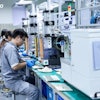

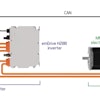
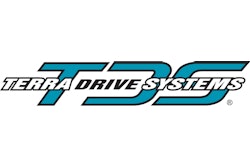
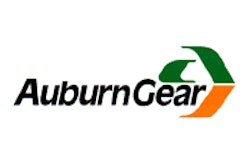
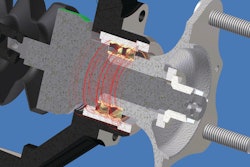








![Sa P75 I Sahr[80]](https://img.oemoffhighway.com/mindful/acbm/workspaces/default/uploads/2025/10/sa-p75-isahr80.Cn3n79HB4H.jpg?ar=16%3A9&auto=format%2Ccompress&fit=crop&h=135&q=70&w=240)


